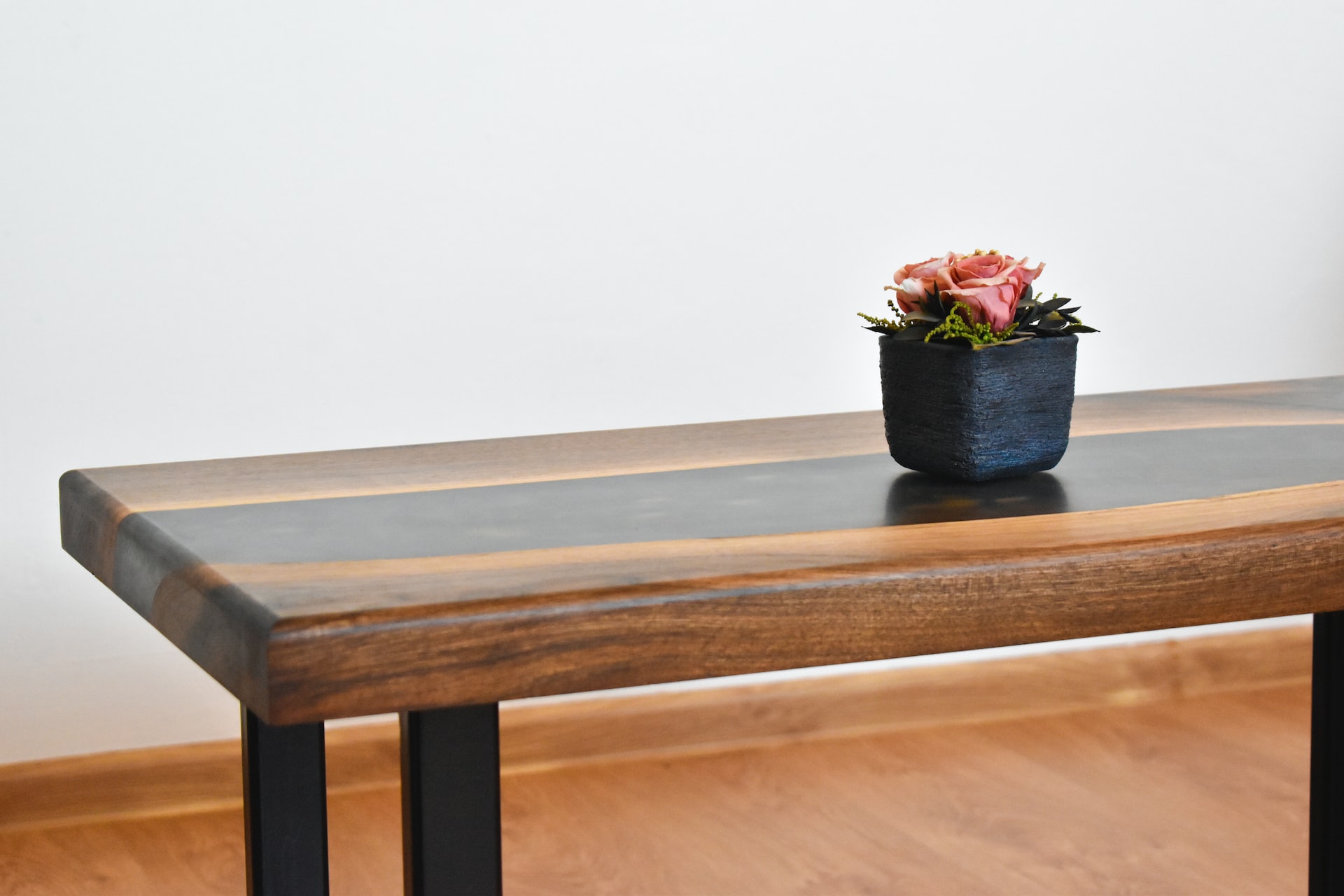
Body + Mind is reader-supported. We may earn an affiliate commission when you buy through some of the links on our site.
Maybe you’re getting ready to move, or perhaps it’s spring housecleaning time. Either way, you noticed that your end tables resemble a topographic map with all the gouges and lumps of heaven-knows-what. Is it time to head to the dump?
You could have a golden opportunity for a little DIY satisfaction at hand. It’s simple for even novices to learn how to sand and refinish certain pieces, like wooden tables, saving hundreds, if not thousands of dollars. Here’s your 6-step guide to before and after furniture restoration, even if you’re a complete beginner.
You can restore nearly any piece of furniture — after all, the folks at Goodwill do so all the time. However, you should first determine if it’s worth your while. Refurbishing saves you money over buying new, but if you’re cleaning out your house and don’t need to immediately replace the item, you might be better off simply donating it.
If your piece features quality construction like dovetail joints that you won’t find on many of today’s lower-end models, it’s worth saving. The same goes if you have an antique or an item bearing a unique craftsman’s mark. Solid wood furnishings are worth far more than inexpensive particle board or hollow-core pieces.
You’ve determined that it’s worth the effort to restore your furniture. Your next step is a thorough scrub. Your typical household bottle of diluted white distilled vinegar might not cut the mustard — or whatever other gunk coats the surface.
Use a plastic razor blade scraper — available in the checkout aisle of many hardware stores — to remove hardened wax or food items. A weak solution of dishwashing detergent and a damp (but not wet) rag removes surface dirt. You can find specialty cleaners like Goo Gone to tackle severe messes such as spilled grease.
Now it’s time to put your elbow grease to the test. Start with medium-grain sandpaper of 100 to 120-grit to smooth away minor scratches and splinters. It’s wise to go over the item at least twice, using a power sander if you lack the requisite upper body oomph.
Your next step is to get that puppy silky. You can immediately repeat the process with fine-grained paper if you don’t have any other repairs to make. Otherwise, skip to step four, then return to this stage. Go over your item at least twice with progressively finer paper, finishing by wiping the piece down with a damp cloth to remove dust.
What if your dining room table has a deep gouge from where your Uncle Fred plunked down his steel dumbbell? If so, pause halfway through your sanding. Your first step in repairing holes is to smooth the surrounding wood, precondition the area and apply the repair putty. Once it dries completely, hit it with the fine sandpaper.
Now is also the time to fix anything that weebles and wobbles. You might have to take complicated items like desks apart and reassemble them to correct any looseness. Look for protruding nails and similar hazards while you do and ensure none of your family members will get caught on any sharp edges.
Now it’s time for the fun part. It takes next-to-no effort to apply most furniture stains. All you need is an inexpensive foam brush. Your toughest part of this stage might be selecting between mahogany and walnut as your preferred color.
Chalk paint is another fabulous alternative for furniture restoration because it sticks easily to most surfaces and hides a myriad of ills. You can completely transform an old particle board entertainment center into something farmhouse-chic and fabulous. You can even stencil designs to complete the look.
Did you ever notice that funky odor prefab furniture emits when you take it out of the box? What you smell is likely due to volatile organic compounds (VOCs). These chemicals have various adverse effects on human health. Some of them may cause cancer and irritate your eyes, nose and throat.
You’ll need to coat your newly restored furniture to keep the paint and stain from fading and rubbing off on your clothing. However, choose your polyurethane with care. You can find low and no-VOC brands at many hardware stores. Opt for these to protect your family’s health.
When it’s time to move or clean house, you might end up with an old end table or chest of drawers that you aren’t sure whether to keep or donate. Furniture restoration can save you considerable cash over buying a replacement while providing you with satisfying before-and-after photographs for social media. Once you determine an item is worth saving, follow the steps above to give it new life.
Your email address will only be used to send you our newsletter, and at any time you may unsubscribe. For more information, see our Privacy Policy.